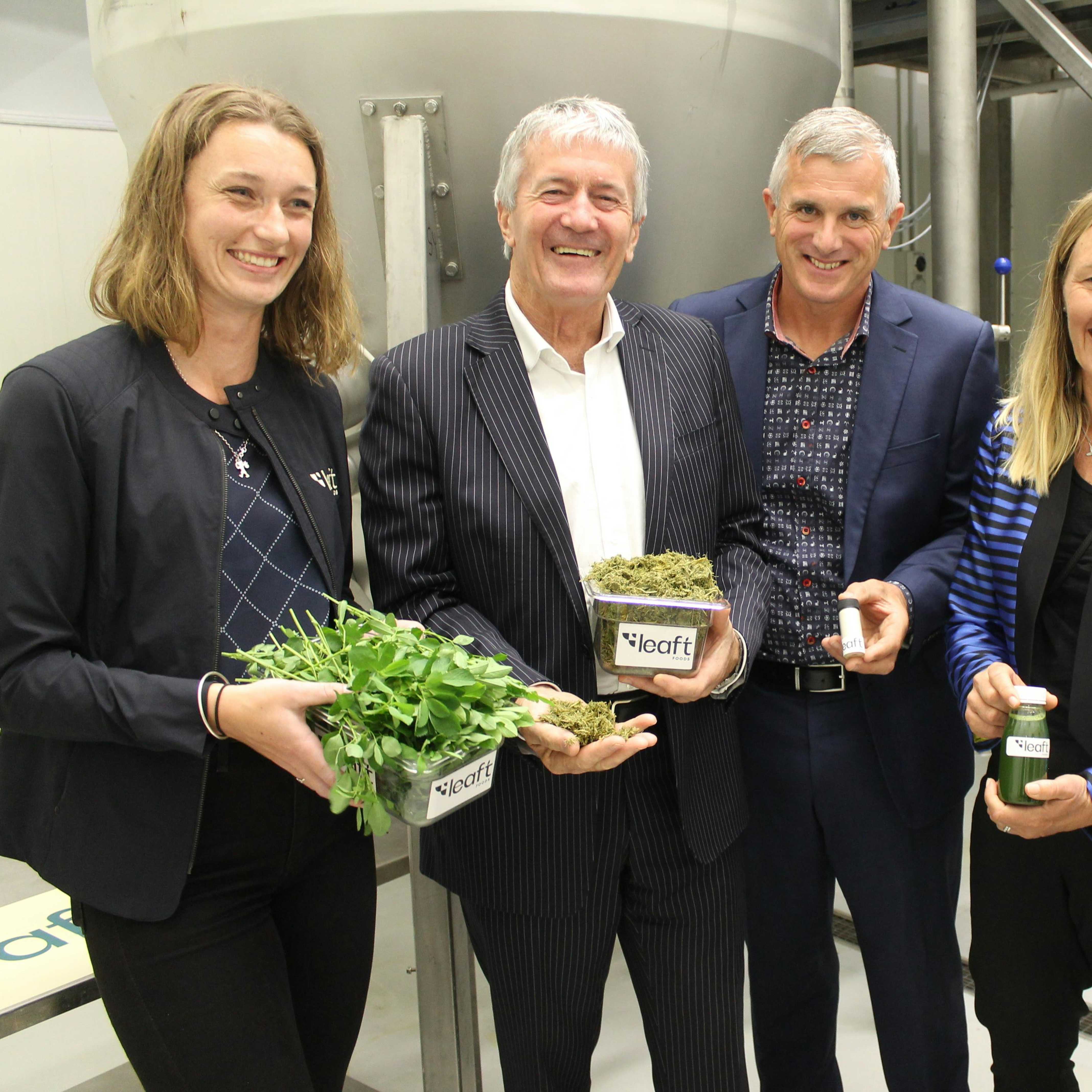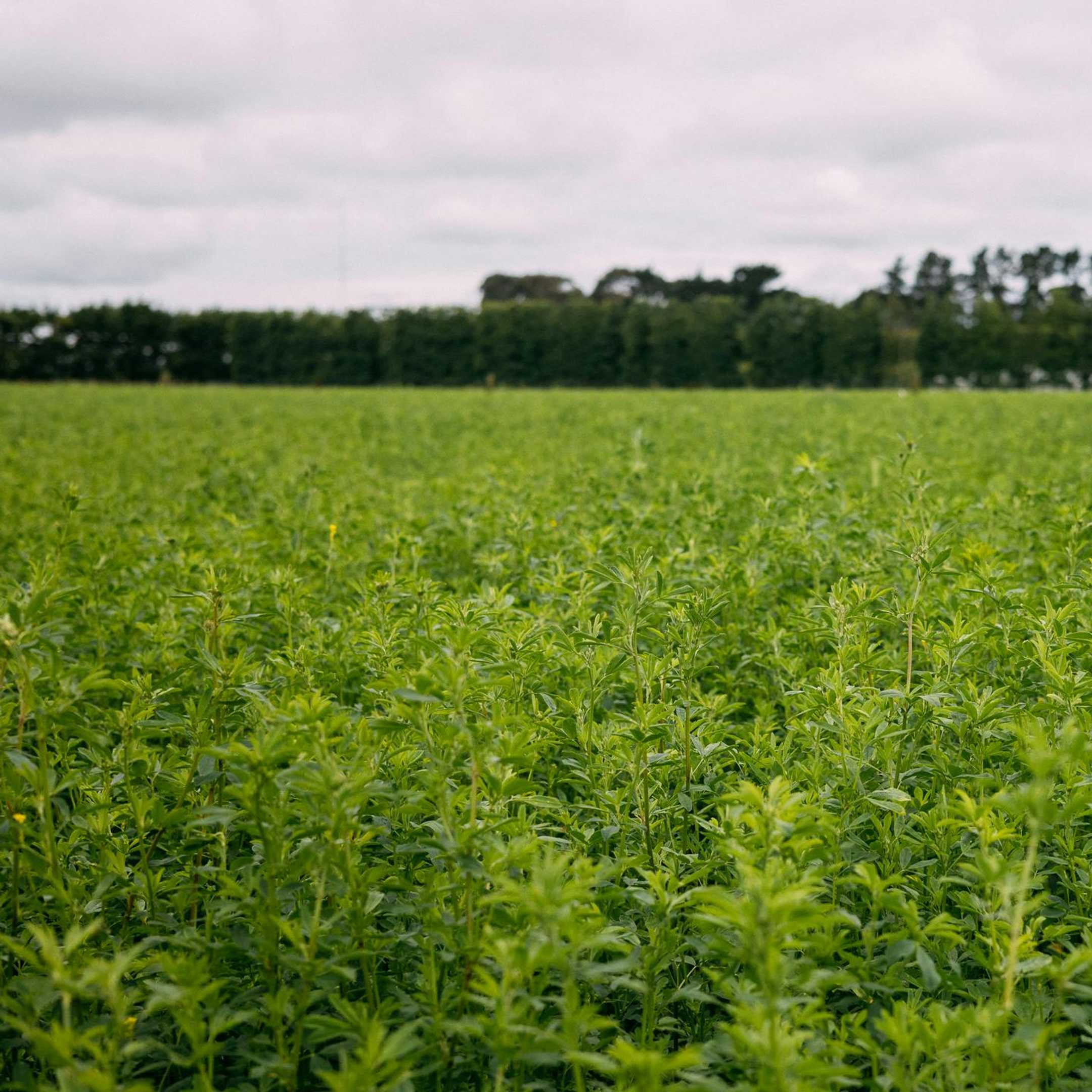Table of Contents
The Future of Protein: Trends and Innovations in Plant-Based Alternatives
In the last 10-20 years, plant-based foods have risen from being somewhat niche, to being more mainstream than they’ve ever been.
Awareness of plant proteins has never been higher, and more and more people are open to eating plant-based alternatives to animal foods - even those that don’t subscribe to exclusive plant-based diets.
But by no means is it stopping there. Predictions vary, but one report forecast the global plant-based meat market would almost double from US$7.9 billion in 2022 to US$15.7 billion by 2027. And this is just one subset of the plant protein market - it excludes vegetables, legumes, grains and many other popular plant proteins.
Innovation is playing a key role in developing new and existing plant protein foods. Rubisco plant protein is a leading example of how a new plant protein can come to the market, with the potential to shake up the status quo.
Current Landscape of Plant-Based Protein
There are many factors that have driven the growing popularity of plant-based proteins.
- There is a growing appreciation for the health benefits of plant foods, including reduced risk of heart disease, diabetes and some forms of cancer.
- Sustainability concerns about the impact of animal agriculture on the environment.
- Animal welfare considerations in traditional agriculture practices.
- Food technology and innovation, including the development of plant-based proteins that mimic meat.
Celebrity endorsements and social media also play a role in demonstrating use cases of plant proteins, exposing people more and more to the options that exist.
Consumers have more choice than ever before. Plant-based milks are a good example.
Traditionally, consumers largely only had variations of cow milk to choose from. Now, plant-based milks such as oat milk, soy milk, almond milk, coconut milk and more are widely available, giving consumers options.
You don’t need to consider yourself vegan or lactose intolerant to prefer plant-based milks; many consumers simply prefer the taste of these alternatives.
There has also been a growing recognition of the high protein content that plant foods can have. The ongoing myth that plant foods have less protein than meat has been debunked, and it is now widely accepted that plant-based diets can provide all the protein and nutrition people need.
In particular, high protein plant foods such as grains, legumes, soy and nuts can provide the cornerstone of a healthy, varied and tasty diet, and this has become well known in many circles.
The Role of Rubisco in Plant-Based Protein Innovation
For all the innovation and development within plant proteins, rubisco holds perhaps the greatest potential of them all.
A primary reason for that rubisco is the world’s most abundant protein. It’s the protein that is found in every green leaf, responsible for photosynthesis. It is grown in abundance all over the world, and this high bioavailability is unmatched by any other plant protein.
The human digestive system is unable to digest rubisco as it is grown in the wild - no matter how many leaves you eat, you won’t get enough protein to sustain yourself. However, many vegetarian animals have existed on rubisco for thousands of years.
Now, cutting edge food science has made advances that are enabling humans to extract its goodness too.
There are a number of ways rubisco is being utilized around the world to advance plant based proteins.
- Leaft Foods has unlocked the powerful nutritional component of rubisco in a highly efficient, powerful plant protein powder.
- RIPE (Realizing Increased Photosynthetic Efficiency) is innovating to better regulate rubisco in crops, increasing yields for the likes of pea and soy.
- Day 8 is looking to utilize rubisco from discarded crop leaves and turn what has previously been a waste product into a protein in its own right.
Different organizations are approaching rubisco in different ways, which highlights its usability, both as a food source on its own and as a protein that can enhance the crops it grows in.
Emerging Trends in Plant-Based Protein
On top of these listed examples where companies are utilizing rubisco as it occurs naturally in fields and paddocks, there are other innovations looking to enhance and utilize plant proteins in laboratories.
Fermentation is a centuries-old way of enhancing flavor, texture and digestibility of plant foods, and it has become a popular technique today. Fermented foods are often cited for gut health benefits, and the process can also enrich foods with essential amino acids, vitamins and minerals.
Cellular agriculture, also known as lab-grown meat, uses cells from animals to recreate whole muscle cells. While this has the advantage of potentially creating animal proteins in a lab, without the same sustainability or animal welfare issues, it can have the downside of being seen as an unnatural process.
Genetic engineering is another scientific technique that has been around for some time, but it is developing in new depths every day. It can be used to boost protein content within plants, make crops more resistant to disease, increase yields and manipulate crops to grow certain desirable traits.
As time goes on, these trends and techniques can be expected to innovate further and become more mainstream.
While the rate of the global population growth may fluctuate, we will need to innovate food production in order to feed the world as it grows. This can be expected to occur in both animal proteins and plant proteins.
Challenges & Opportunities
As with any trends and innovations, the future of plant-based protein comes with a range of challenges and opportunities.
They have the advantage of potentially being able to reduce the environmental impacts associated with traditional agriculture, which is considerable given the heightened focus being put on sustainability in today’s world.
They can also enhance plant-based proteins in a range of ways and create a diverse range of crops with unique properties, including being better suited to changing climates.
However, the sector may also need to address regulatory challenges, as well as public reluctance to eat food that’s been genetically manipulated in laboratories. Taste and texture are always key elements to get right in order to encourage consumers to eat any food, and these are important factors in this context also.
It may also require further innovation to scale in order to feed large populations, and to do so in a commercially sustainable way.
Consumer Perspectives and Behavior
While the growth in plant based foods is based on a number of factors, the two biggest aspects driving change are growing health and dietary motivations, and conscious consumerism, particularly as it relates to ethical and environmental implications.
These two factors appear set to underline consumer behavior into the future. Younger generations are growing up with a heightened appreciation of climate change, and in many ways seem willing to change the way they do things for the sake of the environment.
Plant-based proteins have been positioned as being favorable to animal products from both an ethical and environmental standpoint, and it will be important to maintain this narrative in order to future-proof plant foods in this regard. Education and marketing will help to both attract and keep consumers. The story plant protein producers tell people will have huge power.
As in any purchasing decision, consumers will have to weigh up the price of plant proteins. The lower the price, the more accessible foods will be, but producers will also be balancing this with the cost of production.
In instances where foods are developed through considerable innovation (and the cost of doing so), their foods will naturally be priced higher. This is where the scalability of production will become important.
Future Outlook
Predicting the future is always fraught, but it seems plant proteins are well placed to continue growing in the years to come. There is a strong narrative supporting the ongoing development, and consumption, of plant proteins, and this is reflected in predictions for the plant protein market to grow in the short term.
Technology, as in various other aspects of our lives, holds game-changing potential. Innovators that can deliver breakthroughs in this highly contestable field will have considerable advantages over their competition.
There may also be a need to balance innovation with a movement towards whole, natural foods. Organically grown foods will have a natural advantage in consumer perception compared to food grown in a laboratory. However, that may be overcome if scientists can show there is little to no difference between the two.
We may also encounter disruptions or roadblocks along the way, and regulation is an obvious example of something that will play a role.
As an emerging industry, science is currently developing faster than the regulations, but at some point guardrails will no doubt be put in place. The future will depend on how well regulations empower and enable producers, or even the degree to which they inhibit progress.
The Bright Future of Plant-Based Proteins
Consumer appreciation of the benefits of protein has come a long way in the last generation, and this is set to continue. Within that, some plant foods have emerged as fantastic sources of protein that have many advantages to animal proteins.
Overwhelmingly, forecasters expect the plant protein industry to continue to grow in the years to come - rapidly in some cases.
While innovation has helped to get us to this point, there is still plenty more innovation to be had. Continued research and development in the field will be critical, not only to develop healthy, nutritious food to feed a growing global population, but also to make food resilient to disease and a changing climate.
The future of protein is an exciting one, albeit one with some uncertainty around it. Nobody knows how different the foods of tomorrow will be to those of today, but it does seem certain that plant proteins will continue to be served on plates around the world for many years to come.




